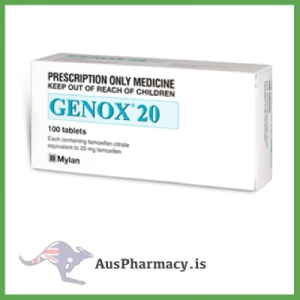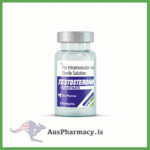Tadarise Pro-20 Cialis 20mg x 20 Tablets
Tadarise Pro-20 (Cialis 20mg) is a well-known formulation containing Tadalafil, a selective phosphodiesterase type 5 (PDE5) inhibitor.
In educational and research contexts, Tadalafil serves as a model compound for studying vascular smooth muscle relaxation, nitric oxide signaling, and pharmacodynamics of enzyme inhibition.
This article provides an educational overview of Tadarise Pro-20’s chemistry, mechanism, pharmacology, and research value in biomedical and pharmaceutical studies.
2. Chemical and Pharmacological Classification
-
Generic Name: Tadalafil
-
Brand/Study Reference: Tadarise Pro-20 (Cialis 20mg)
-
Chemical Formula: C22H19N3O4
-
Molecular Weight: 389.41 g/mol
-
Drug Class: Phosphodiesterase Type 5 (PDE5) Inhibitor
Tadalafil is a heterocyclic compound with strong selectivity toward the PDE5 enzyme, which plays a crucial role in regulating cyclic guanosine monophosphate (cGMP) levels within vascular smooth muscle cells.
3. Mechanism of Action
The core mechanism of Tadarise Pro-20 (Cialis 20mg) revolves around PDE5 inhibition.
-
Nitric oxide (NO) released during physiological signaling stimulates the enzyme guanylyl cyclase, increasing cGMP production.
-
PDE5 breaks down cGMP; by inhibiting this enzyme, Tadalafil prolongs cGMP activity.
-
Elevated cGMP leads to smooth muscle relaxation and vasodilation, improving blood flow in vascular tissues.
In educational settings, this mechanism serves as a clear example of signal transduction modulation through enzyme inhibition.
4. Educational Importance
Tadarise Pro-20 is used in pharmacology and physiology courses to illustrate:
-
Enzyme inhibition and receptor signaling
-
Molecular pathways of vasodilation and endothelial function
-
Pharmacokinetic modeling of orally active PDE5 inhibitors
-
Structure–activity relationships in cardiovascular pharmacology
Students can explore how Tadalafil’s selectivity and longer half-life differentiate it from other PDE5 inhibitors like Sildenafil.
5. Pharmacokinetics
Tadarise Pro-20 demonstrates the following pharmacokinetic characteristics:
-
Absorption: Rapid oral absorption with steady bioavailability
-
Onset of Action: 30–45 minutes in research models
-
Half-life: Approximately 17.5 hours, allowing extended duration of enzyme inhibition
-
Metabolism: Hepatic metabolism primarily via CYP3A4
-
Excretion: Predominantly fecal
In academic discussions, these parameters are valuable for teaching ADME (Absorption, Distribution, Metabolism, and Excretion) principles.
6. Chemical Structure and Binding Dynamics
The molecular design of Tadalafil features a beta-carboline core that enables strong binding to the PDE5 enzyme’s catalytic site.
Educational exploration includes:
-
3D molecular modeling of ligand–enzyme interactions
-
Comparative binding studies with other PDE5 inhibitors
-
Energy-minimized docking simulations in pharmacology labs
This structural insight helps students grasp structure–activity relationship (SAR) concepts.
7. Laboratory and Academic Research Applications
In academic settings, Tadarise Pro-20 (Cialis 20mg) is often used as a model compound to study:
-
The biochemical basis of vasodilation
-
The impact of PDE5 inhibition on cGMP signaling
-
Pharmacodynamic modeling and receptor theory
-
Comparative pharmacology with Sildenafil and Vardenafil
These studies support advanced learning in cardiovascular pharmacology and drug discovery education.
8. Comparative Studies
Comparative educational discussions often include analysis of:
| Parameter | Tadalafil (Tadarise Pro-20) | Sildenafil (Viagra) | Vardenafil (Levitra) |
|---|---|---|---|
| Duration of Action | Up to 36 hours | 4–6 hours | 4–8 hours |
| Enzyme Selectivity | Highly specific for PDE5 | PDE5, minor PDE6 | PDE5 |
| Onset Time | 30–45 minutes | 30–60 minutes | 25–40 minutes |
This comparison aids students in understanding how structural differences lead to distinct pharmacokinetic and pharmacodynamic profiles.
9. Educational Use in Pharmacology
Academic programs use Tadarise Pro-20 to explain:
-
Signal transduction pathways (NO–cGMP–PDE5)
-
Cardiovascular pharmacology and enzyme selectivity
-
Pharmacogenetic variability affecting metabolism and efficacy
-
Ethical laboratory study design in pharmacological education
By studying such examples, learners connect molecular pharmacology with clinical physiology.
10. Structure–Activity Relationship (SAR)
The SAR of Tadalafil emphasizes:
-
A rigid heterocyclic core for high receptor binding stability
-
Hydrophobic and hydrogen bonding regions contributing to enzyme selectivity
-
Side-chain optimization to achieve a long elimination half-life
SAR analysis deepens understanding of drug design principles and therapeutic selectivity.
11. Physiological and Cellular Impact
In physiological education, Tadarise Pro-20 serves as a model compound for:
-
Smooth muscle relaxation in vascular tissues
-
Endothelial nitric oxide synthesis
-
Cyclic nucleotide signaling and regulation
-
Vasomotor tone control in the cardiovascular system
These examples highlight the importance of enzyme-targeted pharmacotherapy in vascular regulation.
12. Pharmacology Ethics and Educational Handling
When used in educational research, Tadarise Pro-20 (Cialis 20mg) must be handled responsibly:
-
Restricted to academic or controlled research environments
-
Subject to ethical use protocols and institutional review standards
-
Demonstrated only under the supervision of qualified educators or researchers
This promotes ethical awareness and responsible laboratory practice in students.
13. Clinical Relevance (Educational Overview)
Though not discussed for treatment, the pharmacology of Tadalafil is relevant in understanding:
-
Erectile physiology and vascular regulation
-
Pulmonary hypertension pharmacotherapy models
-
cGMP-dependent vasorelaxation pathways
This ensures students can connect basic science with real-world pharmacological applications without clinical prescribing.
14. Conclusion
Tadarise Pro-20 (Cialis 20mg) provides a valuable educational tool for learning PDE5 inhibition, pharmacodynamics, enzyme selectivity, and vascular physiology.
Through chemical structure analysis, receptor interaction modeling, and pharmacokinetic evaluation, students gain a comprehensive understanding of enzyme-targeted drug design and molecular pharmacology.
It remains a core example in pharmaceutical chemistry and cardiovascular pharmacology education.







